It's been more than 50 years since Columbia University became the site of student demonstrations amid unrest over the Vietnam War, but the spirit of protest on campus remains strong.
Late Tuesday night, dozens of protestors sieged Hamilton Hall—the iconic site of numerous student occupations over the course of history—and unfurled a banner to reveal the building's new name by protestors: “Hind’s Hall.” The designation was in honor of six-year-old Hind Rajab, who was killed by Israeli troops in Gaza. More than 100 people were arrested at Columbia by the New York Police Department (NYPD), with dozens apprehended in the hall. Those detained face charges ranging from trespassing, criminal mischief, and burglary, NYPD Chief of Patrol John Chell said during a Wednesday press conference.
The student takeover is part of ongoing pressure to have Columbia divest, or remove investment funds, from companies that have business ties, or profit from their relationship with Israel. The actions are also a show of support for the Palestinian people in Gaza who have been living in a warzone since Hamas kidnapped more than 200 hostages and killed around 1,200 Israelis on Oct. 7. More than 34,000 Palestinians have died since, per the Hamas-controlled Palestinian Ministry of Health.
Aniko Bodroghkozy, a media studies professor at the University of Virginia, spoke with TIME about how recent protests compare to other moments in Columbia’s history some 40 and 56 years back. Bodroghkozy participated in a 1985 protest calling for Columbia University’s divestment from South Africa while she was studying for her Master’s.

This conversation has been edited for brevity and clarity.
It’s been more than 50 years since the 1968 Vietnam War protests that rocked Columbia’s campus. Looking at the present-day encampment, what are the biggest similarities between these two flashpoints in history?
The most obvious one is the student takeover of Hamilton Hall, which, in 1968, was the main classroom building. It was the main classroom building when I was at Columbia in the mid-1980s when the student divestment group, Coalition for a Free South Africa, blockaded Hamilton Hall.
The other obvious similarity is Columbia University administrators calling the NYPD to come onto campus and clear and arrest the students. In 1968 that happened twice. That was devastating to the university and ended up radicalizing a lot of students that had not been participating in the protests. It had such a negative impact on Columbia as an institution that by the time I was on campus in the ‘80s—which was the next major upsurge of student protests—we always said, “they'll never call the cops again after what happened in ‘68’.”
Another similarity that doesn't get a lot of attention is there's been a lot of focus on the fact that the pro-Palestinian students have been more antagonistic to other students who [don’t] support them. At Columbia in 1968, [there] was a…significant number of student athletes, but not exclusively [just them], who attempted to prevent students from getting inside the buildings. There were scuffles among student demonstrators…and so that kind of antagonism between different student groups was also going on in 1968. Much less so in 1985, [though] our divestment movement has provided some inspiration to the pro-Palestinian, anti-war movement.
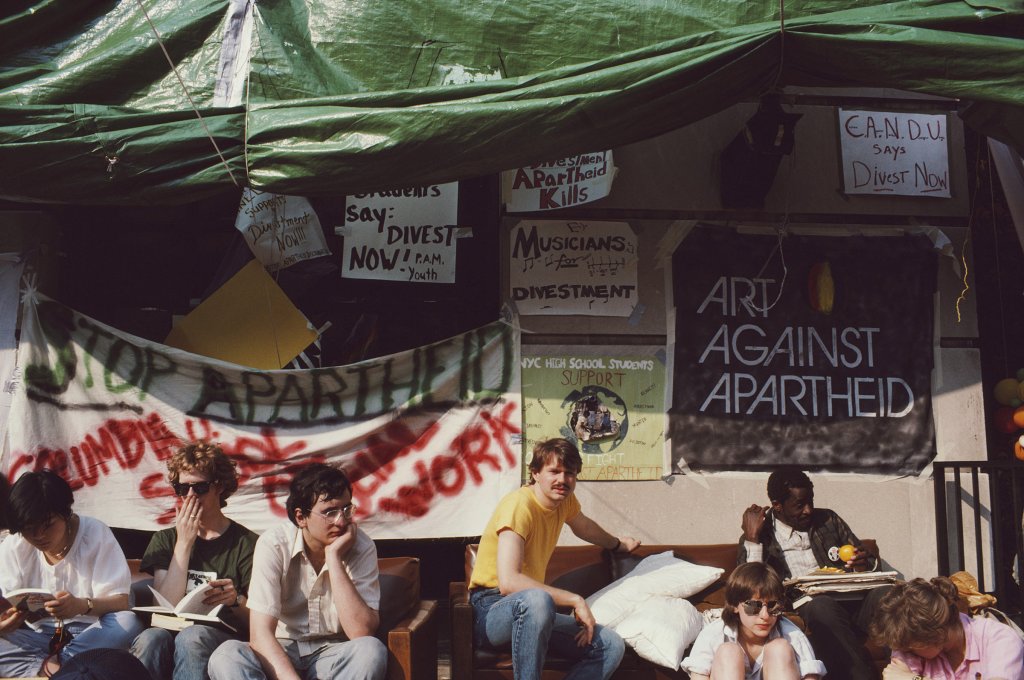
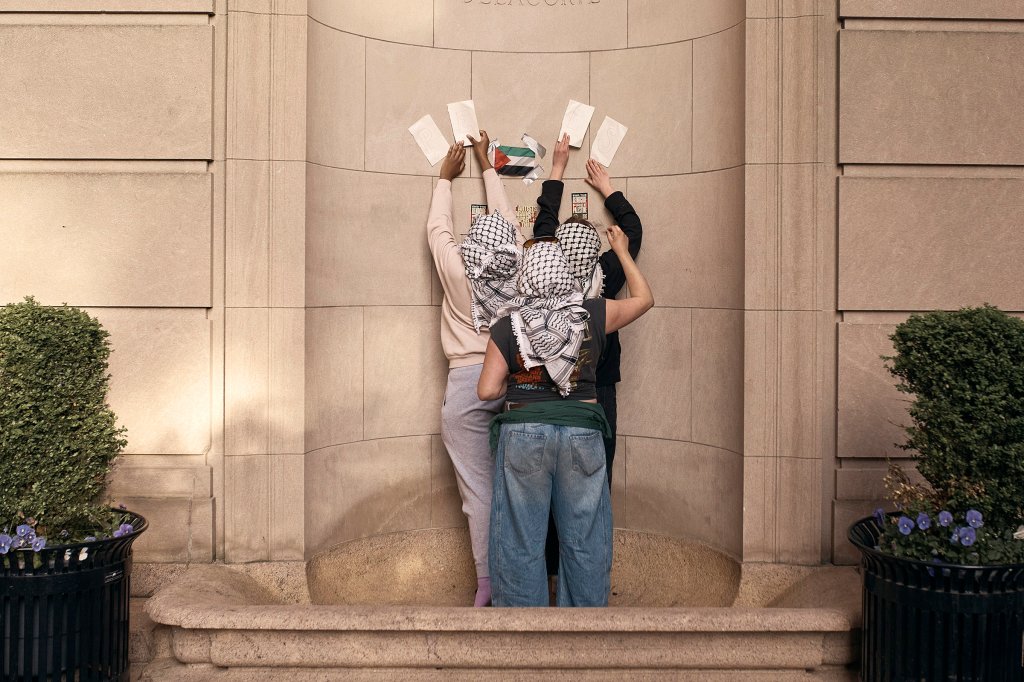
Since you’re mentioning it, I’m wondering if you can explain a bit more about the aims and goals of the 1985 protest, how that played out, and how it compares to what’s happening right now?
The focus was on South African apartheid, and students demanding that the university divest its financial holdings from companies that were actively engaged with South Africa. By the early-to-mid-1980s, a coalition at Columbia and other universities were starting to make demands of the Boards of Trustees to look at [their] investment portfolios. At Columbia, after a number of years of students trying to engage with the administration on the issue, they began to raise the stakes with a hunger strike. Then, the Coalition for a Free South Africa basically chained the doors of Hamilton Hall… and just started camping out on the steps. I think students could get in and out but that encampment went on for many, many weeks.
Eventually, the students and the administration came to an agreement to seriously talk through the issue and a number of months later, the Board of Trustees agreed to divest.
Are there any differences or anything that really distinguishes the protests we’ve seen over time?
In 1968, there was a clear leader, or spokesman. His name was Mark Rudd. He was the head of Columbia's chapter of the Students for a Democratic Society—that was the group that coordinated the protests. He became a media celebrity, and sort of became [the image of] the student protests.
In the wake of the Black Lives Matter movement, which very much [had] a kind of non-leader, very grassroots, or everybody can be a leader, but we don't have charismatic leaders — I think we're seeing the same thing with this movement [model]. It doesn't seem that there are leaders or spokespersons who are being elevated into celebrity kind of positions, so that seems to be a clear difference…Certainly, how the students interact with the media, or kind of don't [is interesting.] There seems to be more anonymous students, because many of them are masked.
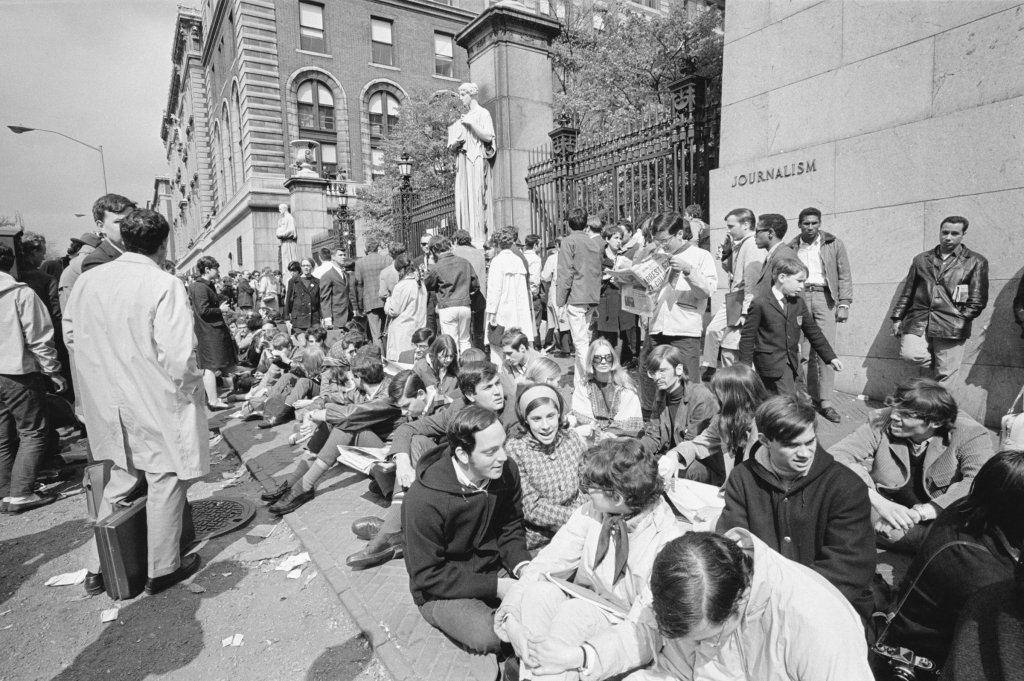

What about public perceptions of this protest? How do you think they compare then vs. now?
I would reframe that to media perception. Media was quite hostile to Columbia student activists in 1968. [I think] they referred to students as vandals, as barbarians. [It was] really quite hostile coverage…One quote…[was], “they're staging the revolts at the Winter Palace,” so making references to the Russian Revolution was not favorable coverage.
The mass media was always looking at the moderate students: “Well, what are the moderate students saying about all of this,” or focusing on what the administration [was] saying. So the hostilities that we're seeing towards the activists, not just Columbia, but throughout the country, feels very, very similar.
Also, the emphasis on outside agitators—that's a term that I certainly was hearing a lot with the coverage I was watching and had been reading about what happened yesterday. That it's “outside agitators” who have taken over Hamilton Hall. There was a certain amount of that in the coverage in 1968: “they're taking their marching orders from these Black Power radicals,” particularly with the taking of Hamilton Hall, which was coordinated by Columbia's Society for Afro-American Students…. So there's that hostility [that’s] quite different from media coverage of youth activism in previous [or recent] years around gun control, the Parkland students, the march of 500,000 in Washington, climate activists or in the summer of 2020, George Floyd activism. That was—as far as other mass media coverage—somewhat more positive.
Certainly what I'm seeing with the coverage of the students at Columbia is that it seems to be quite hostile. I think that can be in part because the students are masked in all kinds of ways. Of course, some of the rhetoric was also troubling in 1968, and the media tended to emphasize the most flamboyant things that the activists were saying.
In terms of the response by university administrators, would you say their reactions to the protests are pretty similar?
In both periods, administrators seem to not quite know what to do. In 1968, the Columbia administration really did not want to call the police in, but they were kind of in a position [with] all these buildings that have been taken over. What the administrators couldn't control was the way that the police behaved…[They] were quite violent. What appears to have been the two times that the police have been called on protesters—this past week, and then yesterday—is apparently much more kid gloves.
On the other hand, we don't really know what happened last night. I was watching CNN and all the journalists were basically kicked off of the campus…We don't have [much] news coverage of what the police did last night when they went into Hamilton Hall and cleaned it out. And then of course, when you have city police come onto your college campus, they're not university police so university administrators don't have any kind of jurisdiction over how they do their jobs. It appears that it wasn't violent, but we don't really know.
[While TIME was at Columbia University on Tuesday night, press was ordered to leave Hamilton Hall before officers moved into the building. Journalists running WKCR, the university’s radio station, say police used sledgehammers as they attempted to enter Hamilton Hall. Samaa Khullar, an investigative fellow at the university, said that student press were “pushed back almost immediately after [the] NYPD came in. Many of us were hit, [and] shoved,” she tweeted on X. NYPD Deputy Commissioner Kaz Daughtry shared a video on X of how officers entered Columbia and City College of New York.]
Read More: ‘Why Are Police in Riot Gear?’: Inside Columbia and City College’s Darkest Night
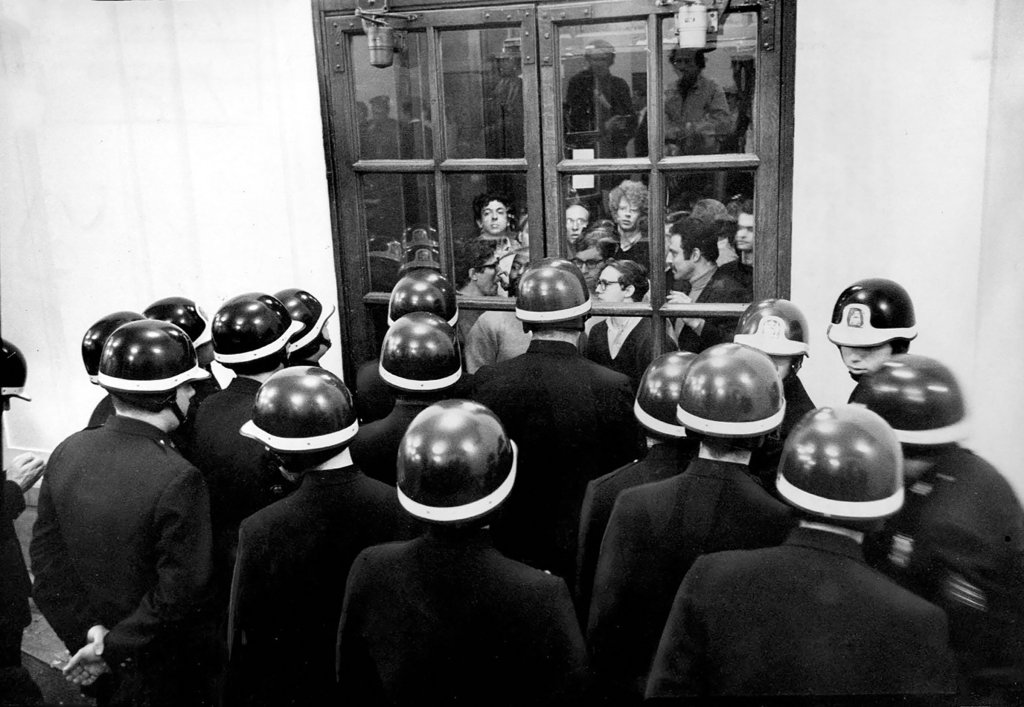

What effect do you think this will have on Columbia's legacy, having done this in the past, and doing it again? How will it affect current students, future students, alumni, and others?
If the past is any guide, what's happening at Columbia right now is not good for the institution. On the one hand, one can see why the administration may have felt they had no choice but to call the cops, but especially for a place like Columbia, because of that history—the irony being, of course, its history that the institution has embraced, right? When Columbia as an institution tells a story, the protesters who took over the building [in 1968] are not presented as vandals in a way that the mass media tended to frame them at the time. But I think for many students, certainly for Jewish students, coming to Columbia will be very fraught. I suspect for Muslim students, considering Columbia will also be fraught.
There's no way that this is a good story for Columbia. Certainly, all highly selective universities are very concerned about their public image. Columbia's public image right now is really terrible. And, you know, for students considering going there the issue of safety [is big]. “Am I safe as a Jewish student? Am I safe as a Muslim student? Am I safe?” You want to go to a university so that you can explore different ideas, meet new people, and feel that you are welcome. And right now Columbia is not seen as a welcoming place for anyone…Institutions like Columbia will eventually rehabilitate their reputation. But in the short term, this is really bad for Columbia not just because these protests are happening on other college campuses, but [because] Columbia has a very particular history around this.
Does that rehabilitation of their reputation just come with time?
In 1968, it came with all new leadership. Columbia's President Grayson Kirk was as out of touch as one could be with the sort of the politics of the era, the culture of the era. He was just completely disconnected from where the students were. The current Columbia president… made her own set of mistakes. We're still in the midst of this crisis.
I think there's a lot of mistrust between administrators, faculty, and students…I think it will probably take at least a few years of some kind of institutional change. But again, we're in the hot fire of this right now. So I think Columbia just wants to get to the end of the semester, graduate the students without more protests (but if Columbia ‘68 is any guide, there will be protests). [But] when you have a large constituency of students who are riled up it's hard to stop them from expressing themselves.
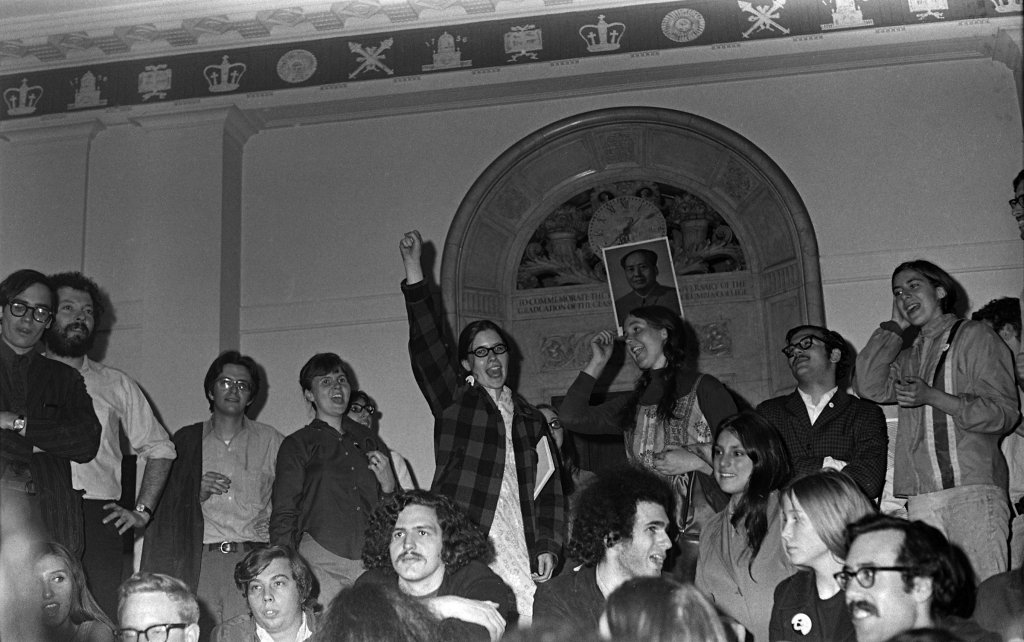
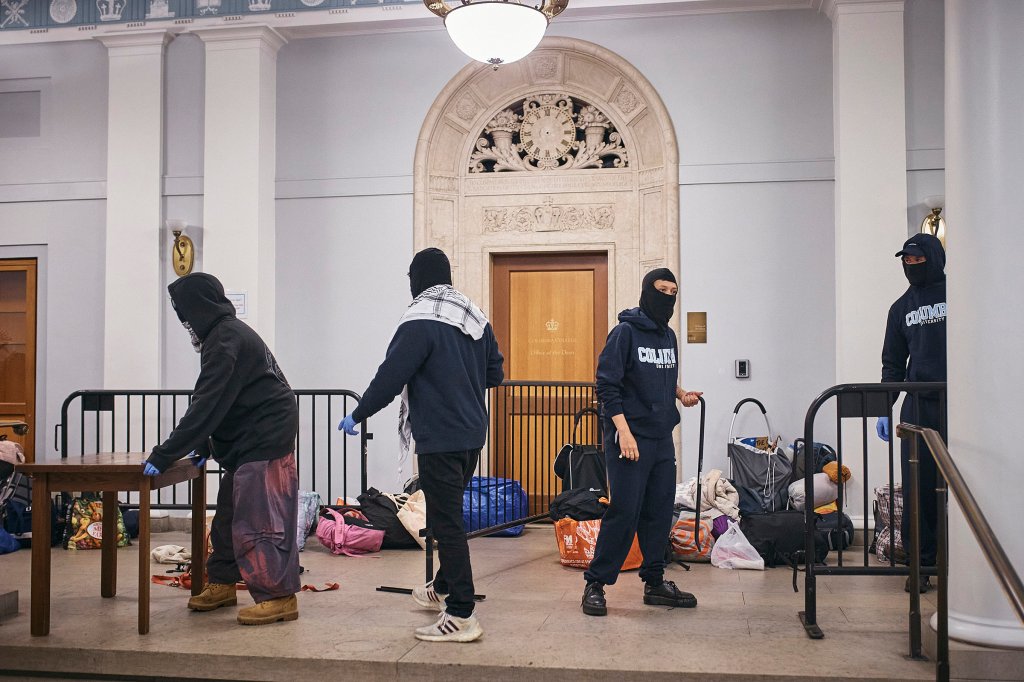
Columbia is also home to one of the most well-known journalism schools across the country. But at the same time, there have been serious attempts to limit the press’s access to the protest and cover it. What do you make of the idea that a school meant to educate future journalists has been pulling back on freedom of the press?
That was distressing to me when I was watching the coverage last night. It's not a good look for the Columbia School of Journalism. As I understand it, their journalism students and faculty were told to shelter-in-place, were not allowed to leave the building, or to cover this major, international media story. I'm sure there will be a lot more discussion about why journalists, whether it's student journalists, or journalism faculty, at Columbia, barred from what was going on last night on their own campus.
Do you think that—because of modern society, social media, and online doxxing—students engaging in protests today are more at-risk of facing consequences, than students who participated in protests in the ‘60s and ‘80s?
I get the fear of doxxing, [but] I think back to the Civil Rights era. These were activists and protesters who were literally putting their bodies and their lives on the line and there's a part of me that thinks if you are going to engage in a protest in a public space that you [should] bring your whole self to that protest. There are of course, consequences. One of the consequences is you can be identified, but you are putting your body on the line for a cause… So masking and trying to hide your identity seems somewhat contradictory to the purpose of protest action. And if the purpose is to change minds and build solidarity, this, to me at least, does not seem to be a productive way to go about that.
With you having been a participant in the 1980s protests, can you talk a little bit about why you decided to join the protests? And were you at all concerned about possible disciplinary action back then?
For me, I went to teach-in to learn more and it just felt to me that this is obviously something that I should support, and if I'm going to support it I will sit-in. I wasn't prepared to get arrested. As a Canadian citizen, I was on a student visa…To me, this was a morally simple matter, right. Apartheid in South Africa was an immoral regime. The wholesale segregation of its Black population, it was just wrong. Nobody, not even the Reagan administration was standing up for South Africa. So in some ways, it was kind of easy. I think in some ways one could argue that the war in Gaza, the horrific loss of life, being that in some ways, is morally, an easy call to make. But the movement itself is going to other places, [with] anti-zionism and all of that is not as morally simple as the case was with South Africa in the mid-1980s.


In terms of the change that the 1968 and 1985 protests brought about, I'm wondering if you can talk a little bit about that, and whether you think the protests happening now will bring about change?
The clearest thing that the protesters got was stopping the construction of this gymnasium in Morningside Park. The whole issue around that this [was] a gymnasium that Columbia is going to put into this park that largely is used by the African American community, and they get an entrance from the back. So that gym never got built in Morningside Park, [but] the protesters obviously didn't stop the Vietnam War.
Obviously, the 1985 protest, we won. I'm hoping that the upsurge in student protests about the war in Gaza, will lead to the political will for a ceasefire, and for an end to the horrific horrific death and destruction in Gaza…The divestment [push today] is so much more complicated than the divestment movement against South Africa… I don't quite know what success for these students really looks like.
More Must-Reads from TIME
- The New Face of Doctor Who
- Putin’s Enemies Are Struggling to Unite
- Women Say They Were Pressured Into Long-Term Birth Control
- Scientists Are Finding Out Just How Toxic Your Stuff Is
- Boredom Makes Us Human
- John Mulaney Has What Late Night Needs
- The 100 Most Influential People of 2024
- Want Weekly Recs on What to Watch, Read, and More? Sign Up for Worth Your Time
Contact us at letters@time.com
